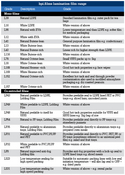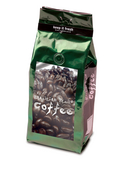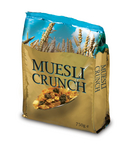PE is a film star with a leading role
20 May 2010One of the best ways to make the most of modern polyethylene lamination films is to start by understanding the science behind these versatile and popular products. Converting Today talks to an expert – Jim Morris, sales manager, Speciality Films, at bpi.films.
“We all know that laminate films are normally used to combine the characteristics of different substrates that are usually adhered to each other by solvent or solventless adhesives or, less frequently, by UV cure adhesive or by heat lamination,” explains John Morris, who has been with bpi.films for 16 years.
“But knowing a number of differences between the films available can increase your success in creating the perfect laminate for your packaged product or packaging operation. For instance, polyamide (PA, nylon) films provide toughness and gas barrier properties, while polyester (PET) films offer stiffness, clarity and heat resistance with the option of coated versions for gas barrier applications.
“Biaxially oriented polypropylene (BOPP) films, on the other hand, which are widely used in laminates for snack foods, crisps, confectionery and other similar products, offer rigidity and excellent optical properties making them ideal for printing on. However, as a downside, their rigidity means poor tear propagation resistance.
“Then of course, there’s polyethylene – a widely used choice for lamination and a material with which bpi, as the UK’s leading manufacturer of polyethylene films, is well versed.
Popular polyethylene
“Polyethylene films have become a widespread choice because of their exceptional sealing characteristics,” explains Mr Morris. “Not only do they provide a very good hermetic seal but they will seal at a lower temperature than all the film types mentioned so far while also benefiting from a wider sealing range. Plus, PE has reasonable tear propagation strength and offers a very good moisture barrie
But while Mr Morris is understandably keen to laud the benefits of polyethylene, he says there are still certain provisos.
“Any polyethylene film destined for lamination should be corona discharge treated,” he says. “If it’s not, it will be almost impossible to achieve a good bond strength between the polyethylene and the other substrate.
“There are also other important considerations which stem from the fact that most lamination machines run at very high speeds,” he continues. “In order to accommodate this pace of operation and to reduce the likelihood of stoppages, a polyethylene lamination film must have a good reel profile. In other words, it must come off the reel flat.
“A flat film can only be achieved if the thickness variations across its web are minimal. By avoiding excessive variations in the film’s thickness, and the occurrence of slack edges, you can also avoid problems with the performance of the final laminated product.”
Material with memory
There is something else to bear in mind when choosing a polyethylene film for lamination, and that is the fact that this is a material with memory.
“Polyethylene is extensible,” says Mr Morris. “It stretches, but sooner or later it will try to return to its previous state. This characteristic’s great if you’re stretchwrapping a pallet, but not so ideal when you’re creating a laminate structure.
“If you use polyethylene that’s not supplied flat and then stretch it flat on a lamination machine in order to adhere it to another substrate, it will eventually try to return to its original form. This can cause stresses within the laminated reel, which sometimes leads to the laminate reel becoming corrugated, or what some people call the ‘tin can’ effect.
“On other occasions, the resulting flaws can be less obvious. Another common consequence of using a non-flat film can be a tendency for the laminate reel to track to one side on automatic packing lines, making it impossible to run lines at full speed.”
A dose of good advice
Considering the speed of operation of most modern vertical form fill and seal (VFFS) and horizontal form fill and seal (flow wrap or HFFS) packing lines, it is perhaps hardly surprising that a polyethylene lamination film must be able to move smoothly and with reduced drag. “For this reason, the addition of a slip additive is a must,” says Mr Morris.
“It may surprise some people but polyethylene is naturally a low slip material. To give it sufficient slip, additives are employed, usually made from vegetable oil. When added to the polyethylene film, these additives are not readily absorbed and are typically pushed back to the surface. Though they will migrate to both sides of the film, they are more attracted to the treated side which happens to be the same side that’s adhered to the other substrate.
“With this in mind, the dosing level of the slip additive is critical to the performance of the laminate reel,” explains Mr Morris. “If too much slip is present at the treated surface, then the adhesive will not work properly, resulting in a poor bond strength and possible de-lamination issues. If too little slip is added, then this will result in a low slip laminate reel that will not run effectively on automated packing lines.”
By and large, most polyethylene laminate films are used where a gas barrier is required. The polyethylene provides the hermetic seal and the other substrate provides the gas barrier.
This is especially true where modified atmosphere packaging (MAP) techniques are employed, such as when food is packed in an environment of nitrogen or carbon dioxide and these gases need to be contained within the pack to extend the product’s shelf life.
To be certain of a polyethylene film that is up to the task, Mr Morris says it is important to choose suppliers that have a keen eye for detail.
“To provide the best sealing performance, polyethylene lamination films destined for use where a gas barrier is required need to be as free as possible from what are known as ‘gels’,” says Mr Morris. “These are small particles of highly crosslinked polymer that do not melt or flow during heat sealing.
“If gels are present and they appear in the seal area then it’s possible that the seal will be incomplete. The MAP gases will escape to be replaced in part by oxygen, reducing the packaged item’s shelf life.
“To help minimise the presence of gels and prevent this issue, specially selected polymers should be used. Extrusion lines should also be equipped with web inspection cameras to detect the presence of gels, which are impossible to see with the naked eye during modern, high-speed film production.”
In short, Mr Morris’s comments suggest there is an evident need for users of polyethylene lamination films to look for suppliers who have a commitment to investing into the latest technology. Such technology not only helps to control gels levels, it also contributes to benefits such as improved reel profiles and better film consistency.
A good hermetic seal can be achieved with PE films, and are widely used in food packaging. Bpi.films 1 PE films must move smoothly on today’s high speed filling equipment for bags and pouches. Bpi.films 2 Chart External weblinksConverting Today is not responsible for the content of external internet sites.Bpi.films




